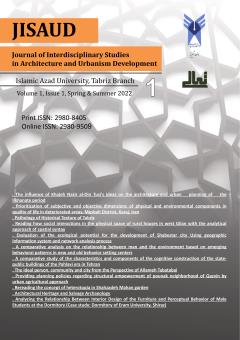Architectural Heritage and Salvage Archaeology (The Case Study of Salvage Excavation in Piranshahr Gerd-i-Gouran Site)
Subject Areas :Farzad Mafi 1 * , Behnam Ghanbari 2 , Hamid Norasi 3
1 - Assistant Professor, Archaeology Department, Abhar Branch, Islamic Azad University, , Abhar, Iran. (Corresponding Author)
Farzad.Mafi@iau.ac.ir
2 - Postgraduate in Archaeology, Abhar Branch, Islamic Azad University, Abhar, Iran.
3 - Archaeology PhD student, Faculty of Humanities, University of Tehran, Tehran, Iran.
Keywords: Architectural Heritage, Salvage Archaeology, Piranshahr Gerd-i-Gouran, Spatial Archaeology,
Abstract :
Architectural relics and evidence form a significant part of the findings and results of archaeological excavations. Along with other buildings, the architectural heritage of land consists of structures obtained from archaeological excavations, historical contexts, and architectural traditions left over from past periods. An undeniable necessity in archaeological excavations and studies is to pay attention to architectural heritage. However, given the speed of action, time, and financial limitations in this type of excavation, when the discussion of salvage excavations is raised, the possibility of the loss of architectural evidence becomes more important. Given the importance of architectural relics and evidence in archaeological excavations, based on the results of salvage excavations in the Piranshahr Gerd-i-Gouran[1]site, the present article has tried to evaluate how archaeologists interact with architectural heritage, especially in salvage excavations. Consequently, taking into account influential assumptions such as 1) lack of priority for architectural studies, 2) lack of attention to salvage excavation requirements, 3) failure to use the expertise of architects in archaeological teams, 4) lack of attention to spatial archaeology approaches and 5) inadequacy of excavation level with research needs, it has tried to verify the exact lack of efficiency of new technologies and other compelling cases. Finally, suggestions have been presented to improve the study methods, documentation, and more detailed introduction of architectural heritage in salvage excavations. The current research method is historical and comparative-analytical, and the collection of information was done in a library style, using archaeological reports and approaches. [1]An Ancient Tepe in Piranshahr, Iran
_||_

